| view in browser | ||||||
 |
||||||
|
Dear Friend, With the end of the year at hand, I’d like to let you know what’s happening at the Moser Center for Leukodystrophies. Every day, we get a little closer to being able to identify leukodystrophies before symptoms appear. In February, Health and Human Services Secretary Sylvia Burwell added X-linked adrenoleukodystrophy (ALD) to the newborn Recommended Uniform Screening Panel (RUSP). This decision has the potential to save countless lives and halt ALD’s genetic threat. In March, Forbes magazine published an article about the screening and quoted both Ann Moser, co-director of Kennedy Krieger Institute’s Peroxisomal Diseases Laboratory, and me. Moser Center staff members raise awareness about leukodystrophies by educating physicians and trainees in the early identification of these rare diseases, and by working closely with patient advocacy groups. For example, we joined an initiative started by Ellie McGinn, an 8-year-old with a rare leukodystrophy, to help her give her disease a more easily pronounceable name and raise awareness for leukodystrophies. (Watch me take #theelliechallenge.) Earlier this year, we hosted the Emerging and Translational Biology in Leukodystrophies conference. More than 100 investigators and clinical experts from around the world attended. While newborn screening and early diagnosis are of extreme importance, there is still much to be done to eradicate ALD and other leukodystrophies. At the Moser Center, we’re developing safer and more effective therapies for all individuals affected by these disorders. Here’s a quick update on our work: Developing models to test therapies: Using cell cultures and transgenic animal technology, we’re working to establish model systems for testing different therapeutics before beginning human trials. So far, we’ve developed cell culture models to test anti-inflammatory medications for ALD, and we’re working on developing models for other, rarer leukodystrophies as well. Developing new therapies: We’re advising several pharmaceutical companies on developing new trial designs and testing new drugs in animals or cell cultures.
Getting ready for clinical trials: The limited number of patients available for clinical trials makes finding a cure for rare diseases like leukodystrophies challenging. To offset this, Moser Center investigators have become expert in cross-standardizing outcome measures. They’re sharing this expertise with the United Leukodystrophy Foundation, the ALD Connect Consortium and the Global Leukodystrophy Initiative to ready the field for clinical trials. At the Moser Center, we take an interdisciplinary approach to providing comprehensive care to patients with leukodystrophies. What distinguishes us is that we don’t simply diagnose patients and identify new diseases. We treat our patients like individuals, recommending personalized treatments and endeavoring to find cures for them. Following in Dr. Hugo Moser’s footsteps, the Moser Center works collaboratively with other leukodystrophy centers across the country and around the world to ensure that every one of our patients receives the best possible care. Thank you for continuing to believe in our mission. We’d be honored if you might make a contribution to the Moser Center. The Leukodystropy community is our family, and there is nothing that matters more to us than eradicating these horrible disorders. Yours, Ali Fatemi, MD P.S. For more information about the Moser Center for Leukodystrophies at Kennedy Krieger Institute, or to make a gift online, please visit our website at KennedyKrieger.org/Leukodystropy. |
||||||
Learn More. Get Involved. Stay Connected. |
||||||
|
|
||||||
| ©2024 Kennedy Krieger Institute 707 N. Broadway, Baltimore, MD 21205 | 443.923.2750 | ||||||
| Contact Us | Privacy Policy | Forward to a Friend | Unsubscribe |
||||||
